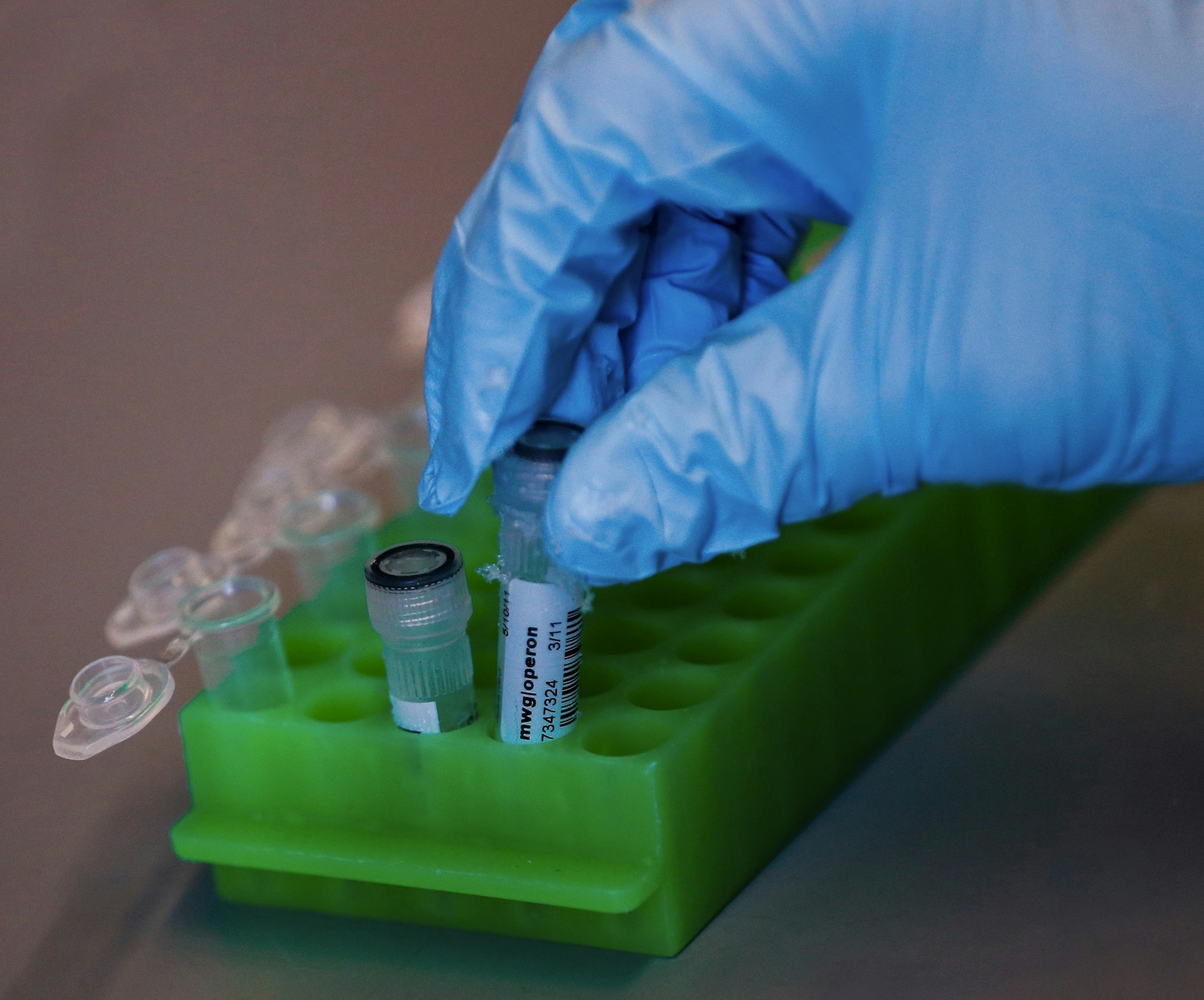In 2003, after the completion of the Human Genome Project, which mapped where all our genes are and what they do, many biologists and geneticists felt they finally had authoritative evidence that race is a fiction.
“DNA studies do not indicate that separate classifiable subspecies (races) exist within modern humans,” the Department of Energy, which sponsored the Human Genome Program, said in a public statement.
“While different genes for physical traits such as skin and hair color can be identified between individuals, no consistent patterns of genes across the human genome exist to distinguish one race from another.”
In other words, as one geneticist put it in an interview for a 2013 paper in the International Journal of Communication that quantified how scientists analyze race, “The Human Genome Project demonstrated that there is no such thing as race.”
Of course, there is such a thing as race — people strongly identify with racial categories and share common experiences with others who identify the same way. Still, the idea of race as a biological truth has persisted in and outside of science. One 2013 study found that “the use of racial discourse that suggests race has a genetic foundation” had actually increased since 2000.
That’s why a team of four academics — a historian and public health expert, a sociologist and lawyer, a geneticist, and an evolutionary biologist — put out a paper last year calling on the National Academies of Science, Engineering, and Medicine to address this discrepancy.
“Racial data is inaccurate in several ways,” said Michael Yudell, the lead author on the paper, chair of the school of public health at Drexel University, and author of Race Unmasked: Biology and Race in the 20th Century. Race is a valuable category in studies that treat it as a social construct, he said, but even then it’s often mishandled — it’s measured inconsistently, for example, since it doesn’t have a scientific definition, making it difficult to compare across studies on the same topic. He advocates instead for using more precise delineations for comparing populations, such as ancestry and geographic origin.
“We’re trying to recognize the fact that there are a whole lot of researchers out there that use race as a variable in their research,” Yudell said. “They’re not doing it because they’re trying to do something wrong or they’re trying to do something harmful. How can we move away from a historically loaded and dangerous terminology that really has no place in scientific practice?”
While it is widely agreed-upon that race is really a proxy for the more relevant factors of ancestry and geographic origin, prevailing opinions about race and genetics still differ. Broadly speaking, geneticists who are “racial realists,” as defined by Peter A. Chow-White and Sandy E. Green Jr. in their 2013 International Journal of Communication paper on how scientists refer to race, argue that race is a biological phenomenon, and that some observations of genomic variation are best explained by socially organized racial groups. “Social constructionists” will say that race is not based in genomics and therefore should not be used in studies that compare populations as if they have some essential differences. According to Chow-White and Green, the racial realist view dominated in published research from 1998 to 2007, and increased rapidly after 2003 when the Human Genome Project concluded.
Sam Oh, an epidemiologist at the University of California, San Francisco, who studies Latino and African-American populations, said omitting race from a study would mean omitting valuable data. “It tells you a lot about somebody,” he said. “There are things that make you, you, and there are things that make me, me, and we’re both homo sapiens, we’re both people, but there are things about us that are very different. Some of it you can explain by geography, some you can explain by what kind of food we’re eating. Other differences can’t quite be captured by terms other than race.”
Other than providing fodder for racists, the way race is treated in research can result in flawed medical care for all races.
Oh’s research group recently published a paper on DNA methylation or epigenetics, the systems that modify gene expression. Seventy-five percent of the difference in the study group’s DNA methylation was attributable to genetics, but the other 25 percent was explained very well by race, which can capture things like how likely they were to be exposed to environmental pollution as well as what their grandparents were like. “Our DNA will just inherently differ because of the population architecture that we as a society have gone through, so there is inherent genetic variation from person to person and also between races,” Oh said.
Oh does believe that there are shortcomings in how race is measured. There is some movement toward at least refining those definitions in scientific research. In September, the Office of Management and Budget announced it is reviewing its requirements for racial data collection in research, such as that done by the National Institutes of Health, with an eye toward greater nuance. In October, a workshop organized by the National Human Genome Research Institute and the National Institute of Minority Health and Health Disparities aimed to generate recommendations “for how genomics and biomedical research can describe participants’ diverse backgrounds and experiences in ways that are scientifically and socially meaningful.” Separately, Yudell is in talks with the National Academies to convene a panel of experts that would tackle the subject and publish recommendations, which he hopes will come together within the next year.
There is a history of bad science around race. Phrenology, the completely bogus science that claimed head shape reflects mental abilities, was used to justify slavery. Eugenics, the idea of improving a population by eliminating inferior genes, was used to support involuntary sterilization in Southern states that wanted to curb their population of African-Americans. The recent surge of racist rhetoric in the U.S., spearheaded by our commander-in-chief, makes this seem urgent now. Vice wrote in October about how people on 4chan are taking $99 genetics tests in order to prove their “whiteness.” (The mixed messaging about race from of at-home genetic testing companies like 23andMe are another issue.) The Atlantic wrote in December about how racial purity advocates will read into even the most benign race-based finding in order to conclude that races are fundamentally different.
That attraction may be inevitable, no matter what scientists do. Oh’s research team leader Esteban Burchard once got a letter from the white supremacist David Duke, thanking them for their research on asthma disparity. (Burchard found the condition to be most prevalent in Puerto Ricans.) Duke felt Burchard’s research supported the white nationalist cause. “I’m not sure how he saw it that way,” Oh said.
Other than providing fodder for racists, the way race is treated in research can result in harmful prejudices. Cystic fibrosis has been traditionally thought of as a white disease and studied in white populations. In 1994, The New York Timeswrote that the mutation that causes cystic fibrosis never spread to non-Caucasian populations. This turned out to be false; scientists had merely overlooked its incidence in other groups. The heart drug BiDil was approved in 2005 by the Food and Drug Administration for just one racial group, African-Americans, because the clinical trial deliberately only included African-American patients “apparently for commercial reasons,” according to a paper published in 2006 in Annals of Family Medicine. The drug’s efficacy in other populations was not even tested.
“People advocate for the use of these categories in research as a way for us to separate people and identify the genetic variations that are more frequent in those groups,” said Shawneequa Callier, a professor at George Washington University who studies issues around genetics research. “The problem is when you try to translate that to care, because you can’t look at someone and know their genetics.”
The solution to the problems caused by overbroad and sometimes inaccurate racial classification in research is tricky. It’s not as simple as eradicating any mention of race from science. Racial categories are important at a minimum because society has reinforced them for centuries. Including these categories in the U.S. Census, for example, are helpful in sociological studies because they are so entrenched in American society that they have become distinct populations that show patterns. That’s why Yudell wants to see an organized cross-disciplinary debate.
“What I’m hoping happens is that there’s really movement at the National Institutes of Health or at the National Academies to help us really roll up our sleeves,” he said. “Social and natural scientists have been trying to address this in one way or another for 100 years. I think it’s time that we actually do something about it for the benefit of science.”









